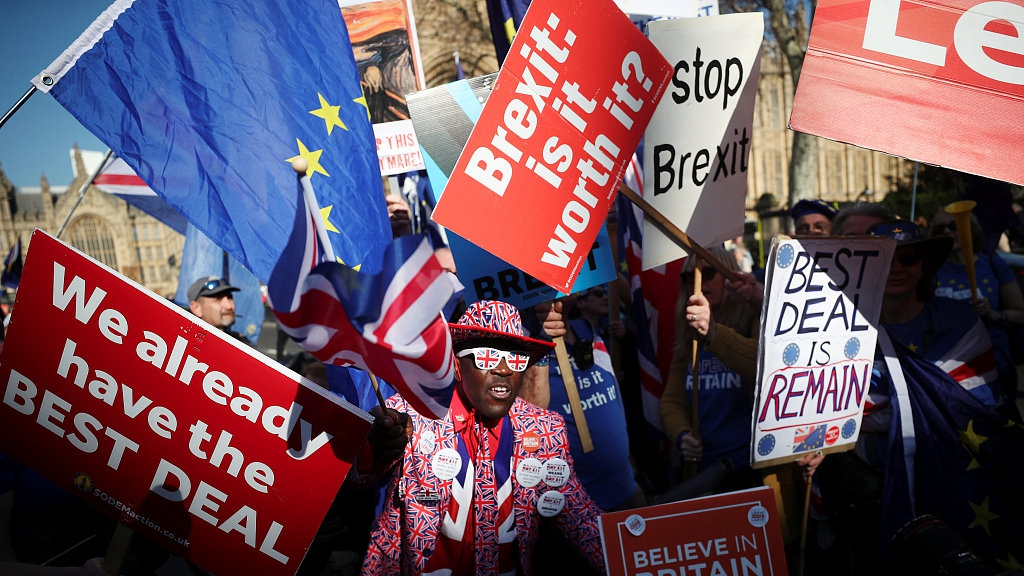
Europe
16:59, 26-Mar-2019
Brexit indicative votes: Which options will MPs pick?
By John Goodrich

Britain will hold a series of "indicative votes" in parliament on Wednesday in the hope of finding a way out of the Brexit deadlock. A series of options will be put to MPs, who will vote for or against each in the hope of finding one backed by a majority.
Read more:
The voting rules are yet to be decided: MPs could simply vote for or against each option in turn, or whittle down the choices until a single preferred option remains. The votes will not be binding, and there is no guarantee any option will win a majority.
What could MPs vote on?
1. Common Market 2.0
What is it? Close alignment to the economic – but not political or judicial – aspects of the European Union. Continued membership of the single market and a customs union.
Supporters: A cross-party coalition of Conservative and Labour MPs. It could be a popular option in a free vote.
Likely leave date: A long extension to Article 50.
2. May's deal
What is it? The withdrawal deal and political declaration agreed with the European Union by Prime Minister Theresa May, including the contentious Irish backstop.
Supporters: A majority of Conservatives and a handful of Labour MPs. The deal has already been rejected twice, but it's the only agreed deal on the table.
Likely leave date: May 22, 2019.
3. May's deal + referendum
What is it? Passing May's deal on condition it is ratified by the public in a referendum.
Supporters: Potentially broad compromise support. It is based on an amendment put forward by two Labour MPs.
Likely leave date: A long extension to Article 50.
4. Customs union
What is it? Sign up to the first part of May's deal – the withdrawal agreement – and then negotiate a customs union with the EU.
Supporters: Joining a customs union is backed by Labour, as is a close relationship with the single market. At present voting through the withdrawal agreement is not part of the party's plan, although it doesn't have particular objections to it – its opposition is to the political declaration.
Likely leave date: May 22.
5. Second referendum
What is it? A fresh public vote on Britain's membership of the EU, probably with specific options rather than the binary "yes or no" choice offered in 2016.
Supporters: A host of third parties and, in theory, Labour – as well as over one million people who took to the streets of London at the weekend.
Likely leave date: A long extension to Article 50.
6. Revoke Article 50
What is it? Britain unilaterally revokes Article 50, essentially canceling Brexit.
Supporters: Some MPs could back this option in a free vote, but it would be hugely controversial and has almost no chance of passing at present. A petition calling for the revocation of Article 50 now has over 5.5 million signatories.
Likely leave date: None.
7. Free trade agreement
What is it? A broad free trade deal similar to that recently struck between Canada and the EU, probably with a lengthy transition period.
Supporters: Limited to hardline Brexiteers.
Likely leave date: Unclear.
8. No-deal
What is it? Leaving the European Union without a deal and trading on WTO rules.
Supporters: Limited to hardliners in the Conservatives, and already voted down twice by parliament. Remains the default option.
Likely leave date: April 12, 2019.

SITEMAP
Copyright © 2018 CGTN. Beijing ICP prepared NO.16065310-3
Copyright © 2018 CGTN. Beijing ICP prepared NO.16065310-3